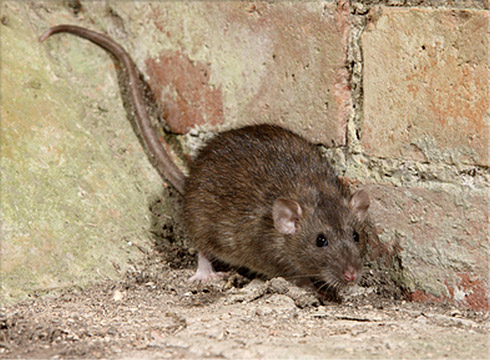
About The Pest
Norway rats are thought to have been first introduced from Asia, but are now found throughout the world. They are much larger than mice and have small eyes and ears and short tails. Norway rats are primarily nocturnal and often enter homes during the fall months when outside food sources become scarce. Norway rats are known to gnaw through almost anything to obtain food and water – including lead pipes. Unlike mice, rats need water to survive. Norway rats are social rodents and build burrows close to one another. Outdoors, Norway rats live in fields, farmlands and in structures. These rats frequently burrow in soil near riverbanks, garbage, in woodpiles and under concrete slabs. Indoors, Norway rats often nest in and around garages, basements, piles of debris or undisturbed materials. These rodents can gain entry to a home through a hole the size of a quarter. Norway rats can cause damage to structures from their chewing and gnawing. These rats are vectors of diseases including, plague, jaundice, rat-bite fever, cowpox virus, trichinosis and salmonellosis. In addition, Norway rats can contaminate food and introduce fleas into a home.
Seasonality
The Norway Rat has no season of inactivity. It remains busy throughout the entire year.
